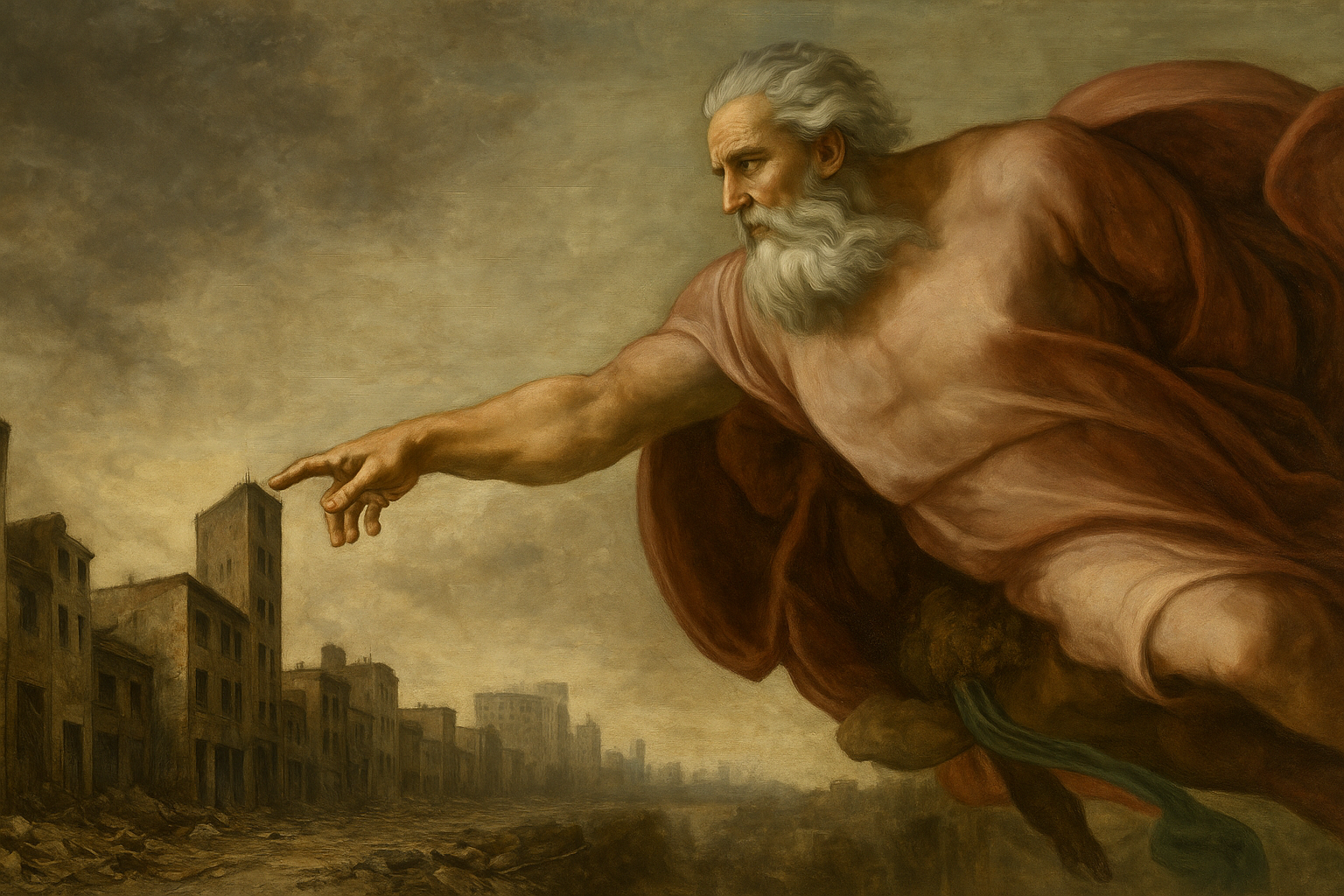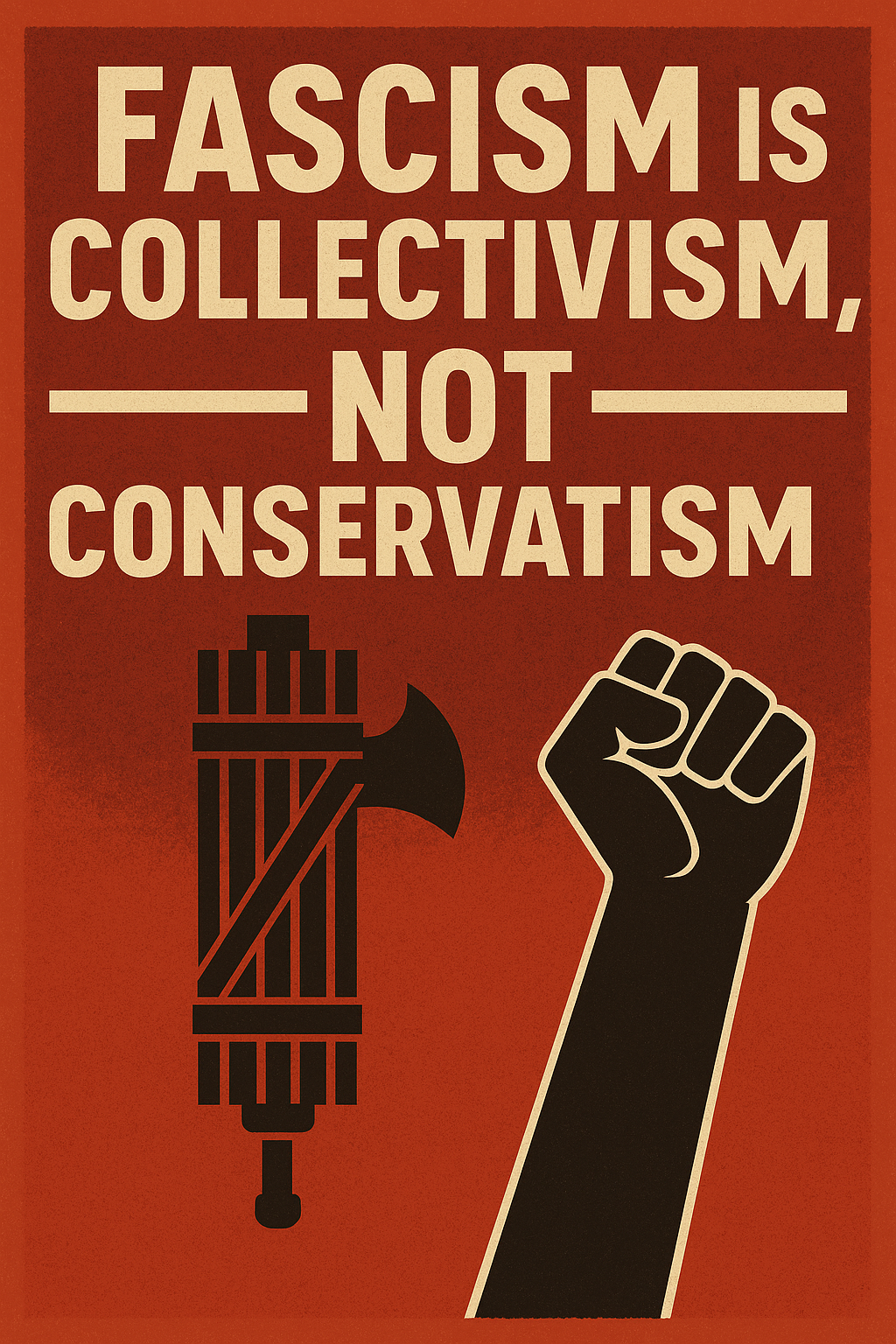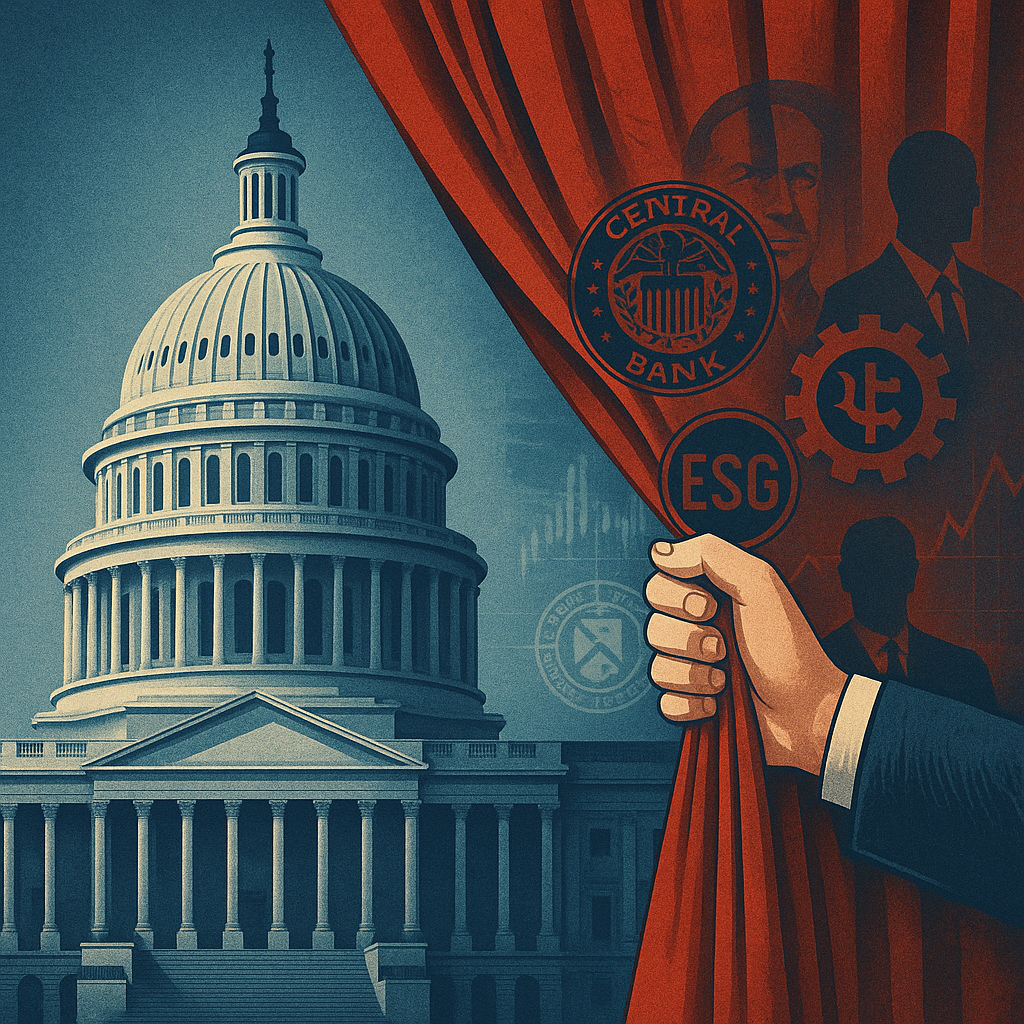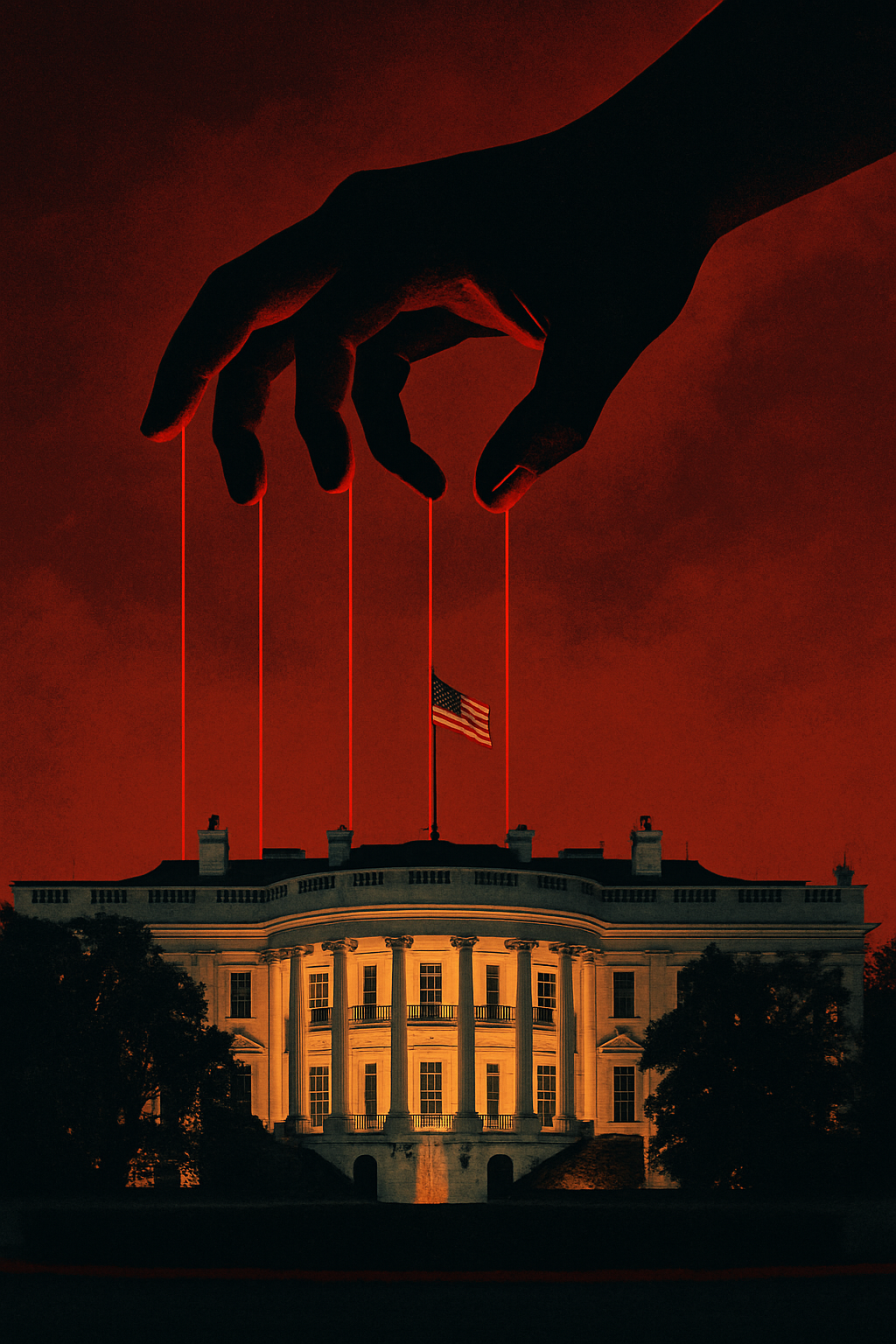When Benito Mussolini came to power in Italy, in 1922, he looked over at the Soviet Union and realized that communism had a fatal problem. Mussolini realized that any system based on a socialist structure had the same fatal flaw: socialism concerns itself with the distribution of goods only, with the flawed assumption that production will not change even when incentives do. Mussolini saw that destroying the incentives to produce caused production to falter. Mussolini was in fact watching production falter in the Soviet Union, and he saw the heavy handed techniques Lenin and Stalin had to use to try and keep production going. Without profit as an incentive, the only incentives left were the whip and the chain. Mussolini blamed capitalism for the depression, but he looked at communism and thought, ‘there must be a better way.’
 Fascism was a reaction to the lack of incentives inherent to socialism.
Fascism was a reaction to the lack of incentives inherent to socialism.
There is of course another problem with socialism: socialism reduces individual people to being no more important than farm animals. Just societies elevate the importance of each individual. It is evil to treat people like farm animals, and as such, socialism is inherently evil. But Mussolini was not concerned with people as individuals, so the moral problem inherent to socialism was lost on him. Mussolini was only concerned with solving the lack of incentives inherent to socialism, and another Italian politician, by the name of Gabriele D’Annunzio had a solution.
Edit: Gabrielle D’Annunzio was the first fascist politician, but he did not invent fascism. The inventors were philosophers Giovanni Gentile, and Benedetto Croce.
D’Annunzio wrote that the most important element of ‘ownership’ was control, and that a state could take control over every aspect of the means of production while leaving legal ownership in private hands. To D’Annunzio, what society needed was an enigmatic leader who could act as the embodiment of the people. This leader would have absolute control over every aspect of the human condition, and over every aspect of the state.
Benito Mussolini put Gabriele D’Annunzio’s vision into practice, in 1922. Adolf Hitler was still virtually unknown at the time.
Socialists did not like the fact that fascism allowed profit. To the true socialist, all of the wealth created by production should go to the workers. Having private ownership profit from production is considered theft. D’Annunzio reasoned that under fascism, profit was not a problem, as anytime a private business person earned excessive profit, the fascist leader could simply seize it, and if necessary replace the owner with someone who was not as greedy. The quest for profit would, however, solve the problem of incentives. Furthermore, by having control of all businesses turned over to the state, all business activity could be directed toward the interests of the people, just as socialists wanted.
Gabriele D’Annunzio was not trying to disagree with Karl Marx and Friedrich Engles. D’Annunzio considered himself a follower of Marx and Engles. D’Annunzio did not see fascism as a replacement for socialism so much as a new version of socialism that solved the problems in Marx’s theories to avoid the pitfalls of the Soviet Union. Fascism is Socialism 2.0.
Benito Mussolini was highly regarded by many prominent heads of state, at least until World War Two started. Franklin Delano Roosevelt was so impressed with Mussolini’s fascist state that he sent envoys to Italy to determine what America would have to do to bring fascism to the United States. Fascism would have been blatantly unconstitutional here, and Roosevelt knew it, but Roosevelt was very much a fascist, and he tried to increase the Supreme Court from nine justices to fifteen. Roosevelt would have appointed the additional six justices himself, and along with existing justices who were sympathetic to fascism, Roosevelt’s court would have ruled fascist powers Constitutional. Luckily, Roosevelt’s plan to pack the court failed, and Roosevelt was not able to take full fascist control of the United States, but make no mistake – Roosevelt was a fascist, and he tried to take fascist control.
In fairness to FDR, I’m sure he believed himself to be a nice fascist, as did Franco in Spain, and as did fascists who sprung up all over South America. There were a lot of fascist leaders in the 1930s and early 1940s. Today we look at fascism as being racist, but the only openly racist fascist was Hitler. There were all kinds of fascists, outside of Germany, who were not racist. The racist element of fascism was unique to Hitler’s Germany.
Fascism even worked reasonably well, which is why so many nations copied it. Allowing private ownership, and non-excessive profit, incentivized owners to improve operations. The fascist leader could direct the economy, but as long as the private owners followed the leader’s plans, they were also free to meet private demand. As such, many of the problems inherent to central planning, that Friedrich Hayek brought up in his book, The Road to Serfdom, were also solved. Fascism brought first Italy, then Germany, and then Spain out of depression – which was exactly what Roosevelt wanted to do here.
Fascism has two problems. One is that it is entirely dependent on the whims of the fascist dictator. If the dictator is evil, so too is fascism. Perhaps Roosevelt would have been an Augustus Caesar kind of leader. Augustus Caesar, being one of the most benevolent dictators in history, led Rome well. But for every Augustus there is a Caligula, and for every Roosevelt there is a Hitler. Furthermore, power corrupts, making it very difficult for a benevolent leader to stay benevolent. Good dictators are the exception. Bad dictators are the norm.
The other problem with fascism is that it reduces individual people to being no more important than farm animals, just as does socialism. In that respect, fascism is just as evil as socialism. Fascism really is nothing more than a new and improved version of socialism: Socialism 2.0.
Fascism is perhaps the least understood economic and political system ever created, and when one looks at the United States today, we are more fascist than anything else. We don’t have the nationalist parts of fascism, with a leader who considers himself the embodiment of the people (or maybe Trump does see himself that way – I really don’t know), and at any rate we don’t have a dictatorship.
We vote for our elected officials, but they do a very poor job of representing the people. Trump was elected largely because most of the people don’t believe the government acts in the best interests of the people, and so the people were willing to elect anyone who would promise to ‘drain the swamp’. Whatever the case, our government does exert the kind of control over our economy that fascists envision, and to the degree that our government is controlled by an economic elite, it is entirely possible that some oligarchy exerts fascist power over the United States. The way our media villanizes Trump, it is hard to say whether Trump really is the would-be fascist leader the media portrays him as; whether some fascist oligarchy, deeply embedded in the state, and collectively known as ‘the swamp,’ feels threatened by Trump, and is doing everything it can to get rid of him, or both. What is clear is that our government already has far too much control over our economy, that our media is deeply biased in favor of state control (and there is currently no such thing as ‘news’), and that a sizeable part of the public wants to head deeper into fascism rather than further away from it. Ironically, one of the most deeply fascist groups in the country calls itself ‘ANTIFA’ for ‘Anti-Fascism’. ANTIFA has no clue what fascism really is, for they are the embodiment of it, and they reek of evil from head to toe.
Fascism is alive and well. It is the dominant economic and political form throughout Western Europe and North America. Our current fascist leaders learned from Mussolini and Hitler: they dropped the whole ’embodiment of the people’ nationalist part, and they keep at least a veneer of democracy on top of their corporatist control. Frankly, we don’t even know who is in control – only that some person or group of people is, and that whomever or whatever is calling the shots, they hate conservativism.
Perhaps Trump is one of them, and his ‘job’ is to be so unpopular as a Republican as to usher in a new era of fascist progressivism. Who knows? The only thing clear is the direction we are heading in, and that we are heading in that direction at an accelerating pace.
I don’t believe our future is Socialism 2.0. I believe it is Socialism 3.0, which is nothing more than fascism without nationalism, and unless we want to be treated like farm animals, we need to fight that future together.





The 'Could' Conundrum - The Daily Libertarian
[…] are going against the Constitution, but that they do not care. Our media ignores the fact that ANTIFA is more fascist than are those who get swastika tattoos, and that in fact both ANTIFA and neo-Nazis have the same […]